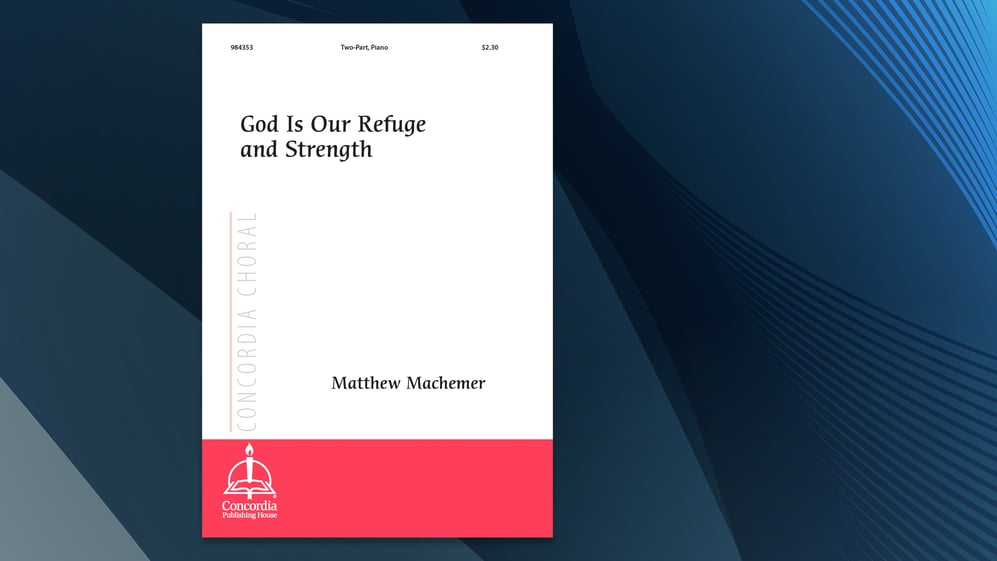Composed for Concordia University Chicago’s celebration of the 500th anniversary of the Reformation, this setting for two-part voices and piano is characterized by soaring vocal lines and idiomatic piano writing. With text that is fresh and expressive, this anthem is appropriate not only for Reformation but also throughout the Church Year.
The Commission
Matthew Machemer, associate kantor at Concordia Theological Seminary, Fort Wayne, Indiana, and graduate of Concordia University Chicago (CUC), wrote “God Is Our Refuge and Strength” for the 500th anniversary celebration of the Reformation. The piece was premiered by a children’s choir made up of schoolchildren from the Chicago area at a festive Reformation service on October 28, 2017, at CUC.
Machemer said the commission was to write a piece for the children’s choir from the text of Psalm 46. The choir workshopped the piece with Dr. Charles Brown, Director of Choral Activities at CUC, in preparation for the Reformation service. The piece has since been published by CPH as a two-part anthem with piano accompaniment.
The Text: Verses from Psalm 46
The anthem’s text is a close paraphrase of select verses of Psalm 46. Machemer said he wanted to incorporate a few specific verses and themes from the psalm that would serve as a focal point for the anthem. The opening line of the piece is repeated both lyrically and melodically, first in unison and then in canon:
God is our refuge and strength! God is our refuge and strength, a present help in trouble.
This line, which serves as a refrain throughout the piece, is essentially word-for-word from Psalm 46:1. As the text explores other verses from the psalm, the music explores other melodic ideas and different ways of incorporating the voices. But the refrain, “God is our refuge and strength!” returns in the middle of the anthem and at the conclusion with its familiar and memorable tune.
Other paraphrases of verses from the psalm appear in the anthem.
We will not fear though the earth gives way, though the mountains be moved to the sea. There is a river whose streams make glad the city of God. God is in her midst; she shall not be moved. (vv. 2, 4, 5a)
“Be still and know I am God. I am exalted among the nations. I am exalted in the earth!” (v. 10)
Come, behold the works of the Lord, the desolations He brings on the earth. The Lord of hosts is with us; the God of Jacob is our fortress! (vv. 8, 7, 11)
The Music: Designed for Children’s Voices
Machemer said that he tries to keep specific things in mind when writing choral music designed for children’s voices.
“I try to think a little bit more melodically than harmonically in the vocal parts,” he said. “With children’s choirs, I’ll do a lot of writing in unison or feature canonic treatment in the melody. If there’s harmony, I try to keep it relatively simple or have it move by steps so that it becomes an introduction into singing harmonically. Or I try to create a nice countermelody so that there can be two melodic components.”
The refrain, “God is our refuge and strength!” is featured in canon multiple times, and the phrase concludes with a two-part harmony that moves parallel stepwise at “a present help in trouble,” making the harmonic component accessible for young singers. The text “The God of Jacob is our fortress” is also featured in canon later in the anthem.
At the verses “Be still and know I am God …” and “Come, behold the works of the Lord …,” the two parts begin in unison and gradually spread apart stepwise before joining together again in unison, another technique that makes singing in harmony approachable for children.
Try this setting at your church on Reformation Sunday by ordering the music.













.jpg?width=50&height=50&name=IMG_20220621_160541_456%20(1).jpg)
